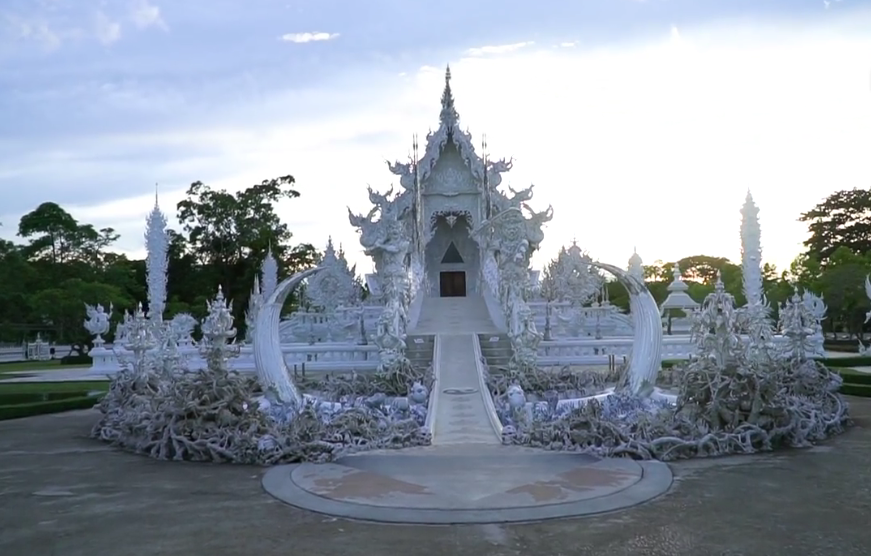There are 33,000 traditional temples in Thailand.
泰国有3.3万座传统寺庙。
But with its majestic white exterior, Wat Rong Khun is anything but ordinary.
有着宏伟的白色外表的白庙却独树一帜。

Every part of Wat Rong Khun is unique.
白庙处处都显得与众不同。
The entrance is lined with ghoulish traffic cones, ghostly heads hang from trees,
入口处放着一排排的骷髅交通锥标,树上挂着鬼头,
and arms reach up to meet you as you cross the bridge to this architecturally curious place of worship.
当你过桥前往这个建筑风格古怪的朝拜之地时,桥下则是无数双伸向你的手。
Wat Rong Khun's most distinguishing feature is its untraditional white color,
白庙最为独特的是它使用了有别于传统的白色,
chosen by the artist to represent purity.
艺术家用它来象征纯洁。
The sprinkling of glass mosaics are an emblem of enlightenment,
点缀的玻璃马赛克象征着智慧,
while the mirrors show off Buddha's wisdom shining through the universe.
镜子则象征着佛的智慧光耀宇宙。
Contrasting the white is a gold building.
和白色建筑形成对比的是一座金色建筑。
The ornate restroom is covered in gold leaf,
华丽的洗手间布满了金叶子,
symbolizing the idea of the mind's fixation on wealth and material possessions.
象征着痴迷财富和物质财产的人心。
While the temple is visually stunning and attracts thousands of tourists from around the world,
尽管这座寺庙视觉上非常震撼,吸引了无数来自世界各地的游客,
when it was first completed, it received negative attention.
但最初建成的时候,人们对它的评价是负面的。
The Thai government, monks, and other artists said it wasn't Thai art,
泰国政府、僧侣和其他艺术家都说它不是泰国的艺术,
as it was a departure from the traditional due to the symbols embracing pop culture found throughout the grounds.
因为它脱离了泰国的传统,在寺庙各处都使用了流行文化的符号。
Despite that, the building stands defiantly as an emblem of Thai art for a modern world.
尽管如此,这座建筑仍然大胆地代表了泰国的现代艺术。












